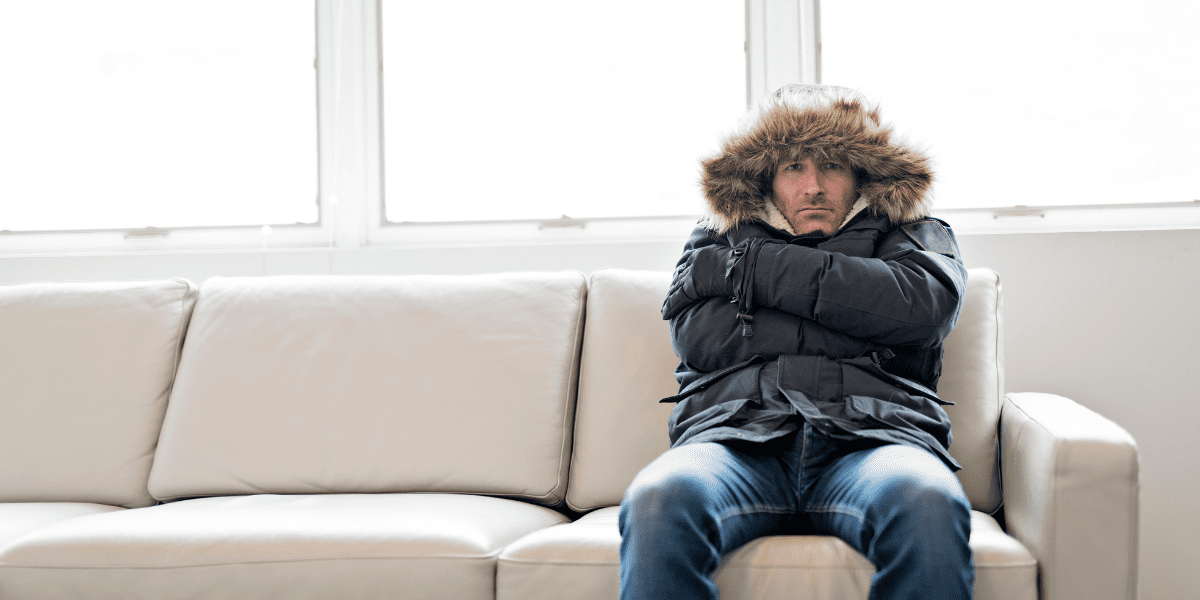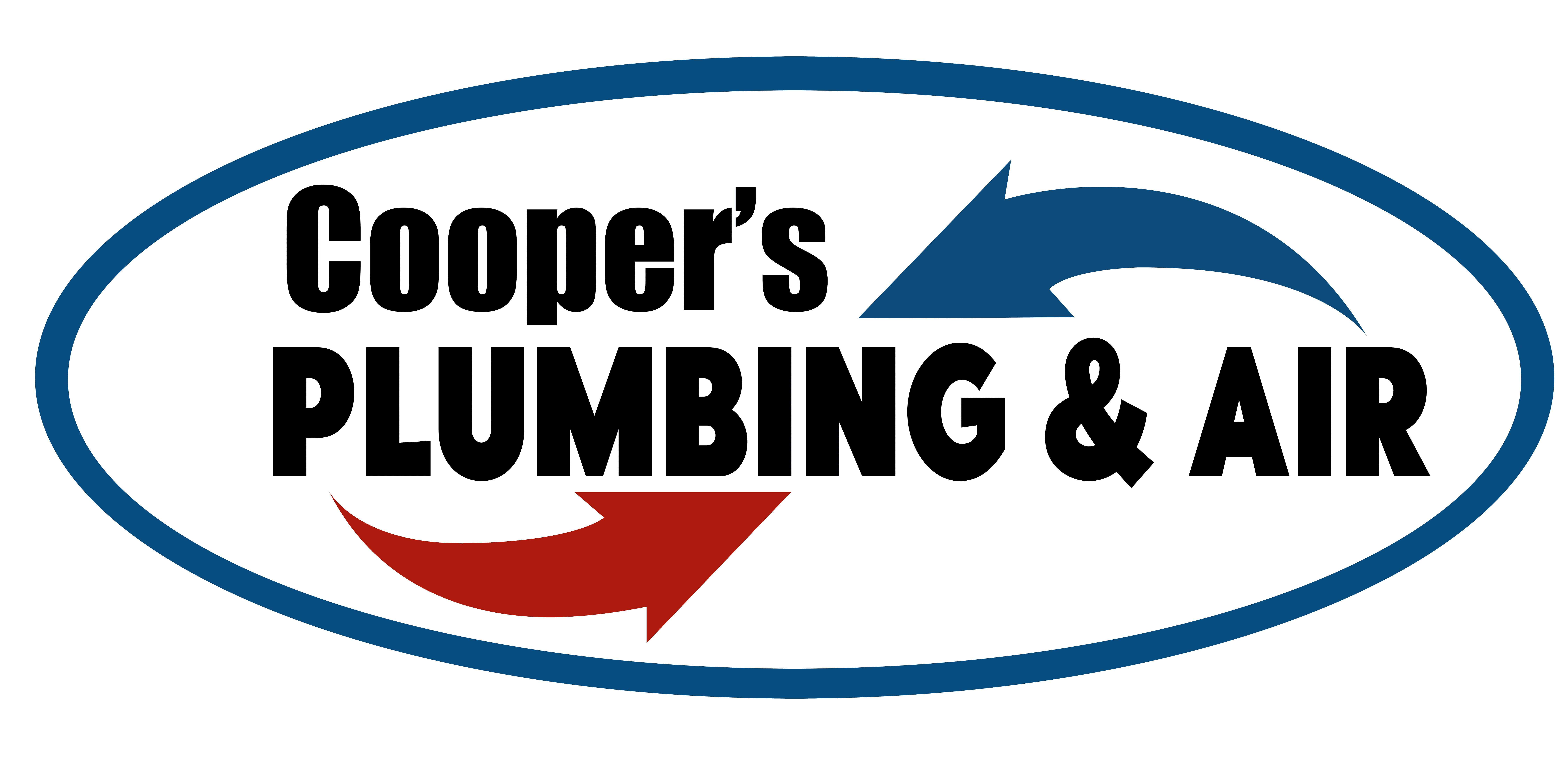
Is your furnace blowing cold air? The team at Cooper’s Plumbing & Air helps you find the reason why your furnace isn’t blowing hot air. Check out our guide below to troubleshoot your furnace and determine whether you or a furnace technician should tackle the problem.
Furnaces Blow Cold Air Upon Startup
Before you start troubleshooting your heating process, remember that your furnace blows cold air when it needs to warm up. Once the heating system warms up sufficiently, it should start blowing hot air through the vents. If it doesn’t generate heat within a minute or two, it needs an inspection followed by a furnace repair.
Why Your Furnace Is Blowing Cold Air
More often than not, a heater blowing cold air has either insufficient air flow, electrical connection issues, or a minor maintenance problem, like a broken blower fan, dirty valve, or insufficient gas supply. Sometimes, you’ll need assistance from a professional who knows HVAC system components backward and forward. Use the checklist below to find and resolve the woes caused by your furnace blowing cold air.
Dirty Air Filter
An air filter traps microscopic debris and pollutants that would otherwise continuously circulate in your home. As it collects these particles of dirt, it increasingly prevents air from flowing through it. A clogged furnace filter could eventually cause your furnace to stop producing warm air.
A clogged air filter can also:
- Force your heating system to overwork
- Cause components to overheat
- Allow other particles to circulate freely throughout your home
Change your clogged filter every three months to avoid these issues.
Thermostat Issues
Something as simple as the wrong thermostat settings can make your furnace start blowing cold air. Check your settings to ensure that:
- Your “Auto” setting is enabled. Thermostats have two operational settings: “Fan” and “Auto.” The “Fan” setting prevents the furnace from blowing warm air through the vents. Instead, your HVAC system will run continuously, circulating room-temperature air with no conditioning. This setting can trick you into thinking your furnace is blowing cold air. Change the setting to “Auto” to heat your home.
- The thermostat wires are still connected. Sometimes, a fixture’s wires can disconnect. This might prevent your thermostat from sending signals to your furnace. Check your thermostat’s wires for secure connections.
- You have your thermostat set to “cool” rather than “heat”. If your air conditioner and furnace use the same thermostat, check if the thermostat is set to “heat” mode. After a mild autumn, you may have forgotten to switch it from “cool” mode to “heat.”
Duct Network Leaks
Your ductwork transports hot air from the furnace unit into each room. Sometimes, the duct materials develop fractures, cracks, and corroded areas. Those damaged areas allow cool air to infiltrate the ducts. The warm, conditioned air mixes with the cold air as a result.
When you stand beneath a vent, you might feel your furnace blowing cold air or a lukewarm air stream. An HVAC contractor can find the leak’s location and mend the damaged ductwork. Otherwise, you might need a new duct network.
Failing Components
Many home and business owners won’t discover component failures until heating season begins. A modern furnace contains numerous intricate parts that ensure it delivers conditioned air to vented locations. Technicians often find issues with:
- Flame sensors: The flame sensor detects the presence of the pilot light’s ignition. Dust, ash, and grime coat it over time. This dirty film prevents flame detectors from correctly assessing ignition. You can clean your detector by carefully removing and wiping it down.
- Heat exchangers: An unchanged filter can cause the heat exchanger to work too hard. An overworked exchanger often translates to a cracked heat exchanger. Once the heat exchanger incurs damage, your furnace might deliver chilly air throughout your home.
- Condensate drains: Your furnace’s heat exchanger produces condensation that escapes through the condensate drain lines connected to it. Clogged drain lines can also prevent your exchanger from working properly.
- Limit switches: The high limit switch is a safety feature that prevents the compressor from overheating. Limit switches cut the power supply to the compressor, which halts the combustion process.
- Pilot lights: The pilot light allows your gas furnace to ignite via its tiny flame. Like the flame detector, it becomes coated in a film of ash and soot and cannot ignite. If you can locate the pilot light, carefully clean it with a soft cloth.
Obstructed Supply Vents
Most areas of your home have designated vents delivering conditioned air to them. Some homeowners discover small belongings and trash inside the vents. This debris prevents air from flowing into the room.
Others accidentally move their furniture in front of the vents, reducing the amount of air delivered during the heating cycle. Check your vents to ensure no furniture or lost items hinder the airflow.
Not Enough Gas
Gas furnaces require a steady supply of fuel to distribute heated air. As your natural gas supply runs low, your furnace blower works less efficiently at heat distribution. A quick call to your gas company will solve this problem.
Frequently Asked Questions About Furnaces Blowing Cold Air
What should I check first when my furnace starts to blow cold air?
First, check your thermostat, air filters, and air ducts. You can likely resolve any issues with these components.
How can I check my return vent’s airflow?
You can check your return vent’s airflow by holding a thin, small piece of paper about half a foot away from the vent during a heating cycle. If the vent pulls the paper up to its grate, it works!
When should I call a technician about my furnace supplying cold air?
You should call an HVAC technician about your furnace supplying cold air when the temperature drops despite the furnace cycling. Furnaces shouldn’t blow chilly air for more than a minute or two immediately following a cycle start.
Cooper’s Plumbing & Air Finds HVAC Solutions that Work!
Is your furnace blowing cold air? Cooper’s Plumbing & Air can get to the bottom of it. Call 866-464-7132 to schedule services with a qualified technician and fix a broken furnace.
